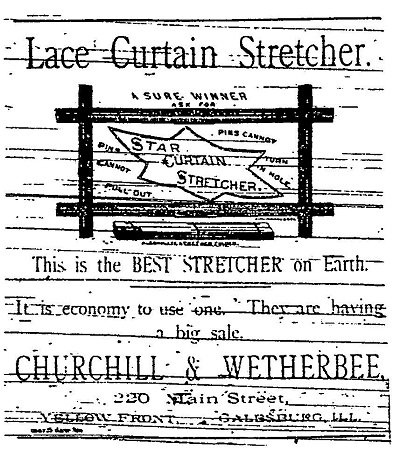
Lace Curtains
By Barbara Schock
Lace making began in the late 15th century in Europe. Linen, silk, gold and silver threads were knotted, looped and twisted to create a design. It was used to trim royal, ecclesiastical and military costumes as well as decorative items for the home. Men as well as women enjoyed lace decorations on their garments. Young women were trained in lace making so they could support themselves. Today the handmade creation of lace is generally regarded as a hobby.Machine-made lace was made possible after the invention of the jacquard loom and was combined with the bobbin net machine in 1837. This led to unlimited possibilities for creating lace and increased production vastly.
With the advent of machine-made lace, decorating windows with lace panels in homes became very popular. The curtains looked lovely when first put up to the windows. But dust, gas fumes and coal smoke gradually had their effects. The curtains became dingy and limp over a period of time.
Every homemaker with lace curtains had to wash them several times a year. After washing, the curtains were dipped in cooked starch to stiffen them. Then, the panels were put on curtain stretchers to dry.
The curtain stretchers were wooden strips with metal pins set in them at one inch intervals. At the ends of the wooden strips were open spaces through which thumb screws and wings nots were inserted to tighten the frame. The boards could be adjusted to the exact finished measurement for the curtain. The numbers were printed on the board so the homemaker could be sure she had each panel the correct size.
The frame with the attached curtain would be set outside to dry. A sunny day with a light breeze was considered best for drying.
The above advertisement from Churchill and Wetherbee, 220 Main Street, in Galesburg, shows how the curtain stretcher was assembled as well as the way it could be folded into a smaller bundle for storing in the attic.
Surely, Clara Sandburg had lace curtains at the windows of the Front Room in her home on Berrien Street. She may have had her own set of curtain stretchers or she may have borrowed them from a neighbor or a member of the family. She wanted her home to look as nice as the neighbors.